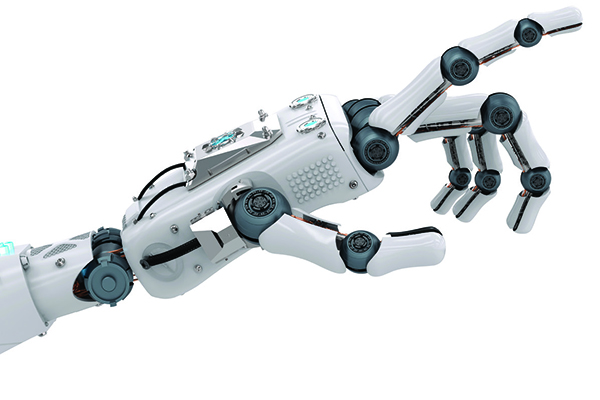Sorry, but your login has failed. Please recheck your login information and resubmit. If your subscription has expired, renew here.
September-October 2018
If it’s September, it must be time for Gartner’sTop 25 supply chains, the lead article in this issue of Supply Chain Management Review. As I was reading this year’s contribution from Gartner, I was struck by the number of the Top 25 that have launched NextGen Supply Chain initiatives, using Big Data, artificial intelligence (AI), robotic process automation (RPA), machine learning and the like to digitize their supply chains. It made me wonder: Is the rest of the pack falling behind or are they ready to follow the leaders? Browse this issue archive.Need Help? Contact customer service 847-559-7581 More options
Real-world advances in machine learning, deep learning and artificial intelligence (AI) are bridging the gap between fact and fiction in the supply chain—a place where science fiction is literally coming to life to help companies work smarter, more efficiently and more economically.
From autonomous robots that work on the dock to drones that manage yard inventory to sensors that track shipment condition during transport, supply chain technology is proliferating on two fronts: the equipment itself and the advanced software that runs the equipment.
Using AI, or the theory and development of computer systems that can perform tasks that normally require human intelligence, for example, machines can think about—and solve—problems at the individual item level and store level. This presents clear advantages for companies struggling under the current labor market constraints and the ongoing need to scale up and meet customer demand.
“Companies can’t just increase their workforces by 100% in this environment; it’s not economically feasible,” says Puneet Saxena, JDA’s GVP of product strategy, supply chain planning. Add AI and machine learning (the science of getting computers to act without being explicitly programmed to do so) to the mix, however, and software developers gain the power of being able to model supply chain problems in more granular detail.

This complete article is available to subscribers only.
Log in now for full access or start your PLUS+ subscription for instant access.
SC
MR
Sorry, but your login has failed. Please recheck your login information and resubmit. If your subscription has expired, renew here.
September-October 2018
If it’s September, it must be time for Gartner’sTop 25 supply chains, the lead article in this issue of Supply Chain Management Review. As I was reading this year’s contribution from Gartner, I was struck by the… Browse this issue archive. Access your online digital edition. Download a PDF file of the September-October 2018 issue.Real-world advances in machine learning, deep learning and artificial intelligence (AI) are bridging the gap between fact and fiction in the supply chain—a place where science fiction is literally coming to life to help companies work smarter, more efficiently and more economically.
From autonomous robots that work on the dock to drones that manage yard inventory to sensors that track shipment condition during transport, supply chain technology is proliferating on two fronts: the equipment itself and the advanced software that runs the equipment.
Using AI, or the theory and development of computer systems that can perform tasks that normally require human intelligence, for example, machines can think about—and solve—problems at the individual item level and store level. This presents clear advantages for companies struggling under the current labor market constraints and the ongoing need to scale up and meet customer demand.
“Companies can't just increase their workforces by 100% in this environment; it's not economically feasible,” says Puneet Saxena, JDA's GVP of product strategy, supply chain planning. Add AI and machine learning (the science of getting computers to act without being explicitly programmed to do so) to the mix, however, and software developers gain the power of being able to model supply chain problems in more granular detail.
SC
MR


More Software
- Game on: Rethinking change management for the digital era
- Predicting stockouts: Enhancing FMCG resilience through data-driven insights
- Electronics Supply Chain Seeks Balance in 2024
- Digital Approaches, End-to-End Thinking Help Supply Chains Evolve
- Transforming Supply Chain Management with Intelligent Software
- Maximizing Return on Innovation Investment: 6 Ingredients for Success
- More Software
Latest Podcast

 Explore
Explore
Topics
Software & Technology News
- AI, virtual reality is bringing experiential learning into the modern age
- Humanoid robots’ place in an intralogistics smart robot strategy
- Tips for CIOs to overcome technology talent acquisition troubles
- Game on: Rethinking change management for the digital era
- Predicting stockouts: Enhancing FMCG resilience through data-driven insights
- Top Performers Investing in, Benefitting from AI
- More Software & Technology
Latest Software & Technology Resources

Subscribe

Supply Chain Management Review delivers the best industry content.

Editors’ Picks





